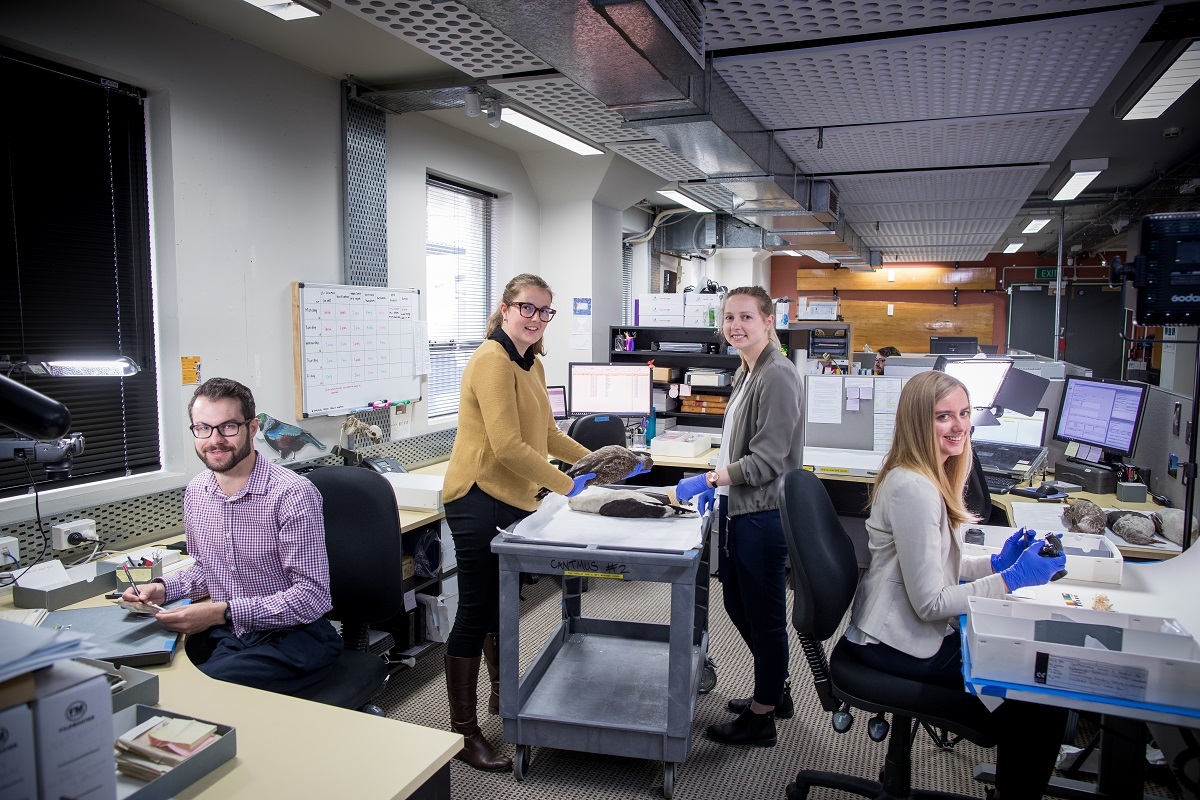Canterbury Museum cares for millions of objects of artistic, cultural, historical or scientific interest. The items in our collection are a diverse mix of ages, materials and sizes. They also differ widely in the amount of information, or provenance, that is known about them.
Regardless of what they are or where they come from, it’s important for the details and provenance of all our objects to be documented so that it is not lost. It’s also important for their location within the Museum to be tracked so they can be easily retrieved if needed for display, study by researchers or for loaning to other institutions.

Canterbury Museum was established in 1867. In the 153 years since, there have been some major changes: in personnel, collection department structures, storage systems, cataloguing numbering systems, and acquisition and documentation processes. As a result of all this change, some objects aren't documented to the same level as others in the collection. Add to that the effects of the Canterbury earthquakes which resulted in some undocumented location moves, and the database needed some work. Enter the Collections Inventory Team to save the day!

A few years ago, we decided our entire collection needed a full inventory to fill the gaps in our database. A team was established to systematically go through the entire collection, checking the status of each object’s database record. Originally consisting of five staff, the team now comprises 11 full-time staff: four photographers, four cataloguers, a lead technician, an associate curator and a project manager.
To comprehensively inventory the collection, the Inventory Team moves through each storeroom in the Museum, shelf by shelf. The aim is that, at a minimum, every object is labelled with its own unique identification number, has basic information (including its physical location within the Museum) recorded on the database and has an identifying photograph linked to its database record. Many objects in the collection already have records that exceed that level of detail, but most need tweaking to add detail. Some objects have numbers and information with them but haven’t yet been added to the database and then there are a few that have no numbers or identification and need the full works.
These objects without identification need to be assigned a unique number so they are identifiable in the future. They are allocated an accession number prefixed by UD (undocumented) and have a record created with as much information as we have for them. The plan is that after a full inventory has been carried out of the entire collection, a team will then work their way through all of the UD objects and try to reconcile them with records of objects that haven’t been found.

Another important step in the inventory is to ensure that each object has at least one good quality photograph of it linked to its database record. These images are a valuable resource, enabling access to an object’s appearance without risking damage to it by getting it out of storage. It also offers a snapshot of an object’s condition at this point in time, assisting us in monitoring the deterioration of materials, such as some plastics, that do not age well. These images also offer the opportunity to share our collection more fully through the Museum’s Collection Online resource.
With more than 2.3 million objects in the collection we expect the full inventory will take many years to complete, but at the end of it the Museum’s collection will be much more accessible to the wider community. In the meantime, we will be sharing on this blog and social media some of the interesting object discoveries that we come across as we search the many shelves of the Museum. So watch this space!





